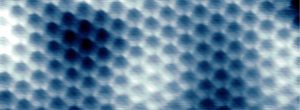Ohio State researchers have been awarded a prestigious iSuperSeed2 award to explore new materials for the future of quantum information systems by the National Science Foundation (NSF). The iSuperSeed2 grant, awarded as a supplement to the Center for Emergent Materials (CEM) at Ohio State, an NSF Materials Research in Science and Engineering Centers (MRSEC), was the single award granted in the area of quantum information.
Professors Daniel Gauthier, Jay Gupta, Ezekiel Johnston-Halperin, and Roland Kawakami in the Department of Physics are collaborating with Prof. Michael Flatté at the University of Iowa on the project, bringing together researchers with expertise in 2D materials (IRG-2: Gupta, Kawakami), spin and magnetism (IRG-3: Flatté, Johnston-Halperin), and quantum measurement (Gauthier). In addition, collaborations outside the iSuperSeed2 team include recent Discovery Theme hires Profs. Chun Ning “Jeanie” Lau (Physics) and Marc Bockrath (Physics).

The program focuses on using the weak interactions between mechanically stacked materials, known as van der Waals bonds, to develop a universal approach to quantum transduction (the transfer of quantum information between two different materials). This van der Waals bonding is commonly found in 2D materials such as graphene and hexagonal boron nitride (hBN), leading to the creating of “van der Waals heterostructures” where single to few layers of 2D crystal can be mechanically stacked to fine tune layer-to-layer coupling.
As a result, van der Waals bonds allow for a “Goldilocks” level of interaction between two materials, where the quantum interactions are neither too weak nor too strong, and are present in materials ranging from insulators, to conductors, to magnets, to superconductors. Ohio State researchers plan to exploit this flexibility to explore a wide variety of materials for applications in future quantum-based technologies.
